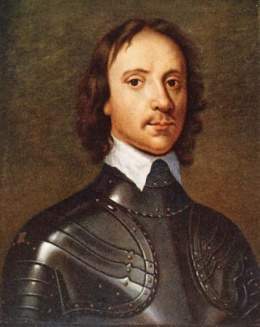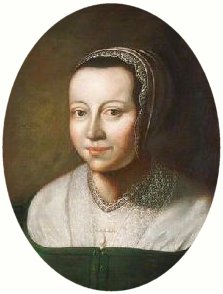CHARLES I
Charles I was born in Fife on 19 November 1600, the second son of James VI of Scotland and Anne of Denmark. On the death of Elizabeth I in 1603 James became king of England and Ireland. Charles’s popular older brother Henry, whom he adored, died in 1612 leaving Charles as heir, and in 1625 he became king. Three months after his accession he married Henrietta Maria of France. They had a happy marriage and left five surviving children.
Charles’s reign began with an unpopular friendship with George Villiers, Duke of Buckingham, who used his influence against the wishes of other nobility. Buckingham was assassinated in 1628. There was ongoing tension with parliament over money – made worse by the costs of war abroad. In addition, Charles favoured a High Anglican form of worship, and his wife was Catholic – both made many of his subjects suspicious, particularly the Puritans. Charles dissolved parliament three times between 1625 and 1629. In 1629, he dismissed parliament and resolved to rule alone. This forced him to raise revenue by non-parliamentary means which made him increasingly unpopular. At the same time, there was a crackdown on Puritans and Catholics and many emigrated to the American colonies.
Unrest in Scotland – because Charles attempted to force a new prayer book on the country – put an end to his personal rule. He was forced to call parliament to obtain funds to fight the Scots. In November 1641, tensions were raised even further with disagreements over who should command an army to suppress an uprising in Ireland. Charles attempted to have five members of parliament arrested and in August 1642, raised the royal standard at Nottingham. Civil war began.
The Royalists were defeated in 1645-1646 by a combination of parliament’s alliance with the Scots and the formation of the New Model Army. In 1646, Charles surrendered to the Scots, who handed him over to parliament. He escaped to the Isle of Wight in 1647 and encouraged discontented Scots to invade. This ‘Second Civil War’ was over within a year with another royalist defeat by Parliamentarian general Oliver Cromwell. Convinced that there would never be peace while the king lived, a rump of radical MPs, including Cromwell, put him on trial for treason. He was found guilty and executed on 30 January 1649 outside the Banqueting House on Whitehall, London.
http://www.bbc.co.uk/history/historic_figures/charles_i_king.shtml
GLORIOUS REVOLUTION
Charles II, King of England, Scotland and Ireland, died in 1685. Although he left a whole host of natural children, no legitimate heir to the throne was born of his marriage with the Portuguese Catharine of Bragança. His brother James II succeeded him to the throne, but the new King’s religious zeal and the measures he took in favour of Roman Catholicism rubbed the Protestants up the wrong way. As a matter of fact, his plea in favour of religious tolerance did not greatly differ from the view taken by Charles II, but the fact that James was openly a militant catholic made him much more threatening. In 1688, when his second wife, Maria of Modena, gave birth in 1688 to a little boy who was christened James Francis Edward (later the ‘Old Pretender’), the Protestants saw their hope – that James’ protestant daughter Maria would ever succeed her father – vanish. Instead, a catholic dynasty threatened to sit firmly on the English throne. The birth of the little prince was surrounded by mystery. Rumour had it that Maria of Modena was too old to have a child and that the baby had been smuggled into the delivery room by Jesuits.

When, against the dissolved Parliament’s will, James promulgated laws giving Roman Catholics greater religious freedom, some members of the House of Commons and church dignitaries asked William III to intervene. William was at war with France and saw in the request an excellent opportunity to get England on his side. The States General having given their assent, William III landed near Brixham in Devon with an army of 15,000 men on 5 November 1688. James’ army deserted and he himself fled to Kent, where he was taken prisoner. He fled to France after having been liberated.
In 1689, the Parliament convened and came to the conclusion that James had renounced the throne by fleeing to France. William and Mary were invited to reign together as King and Queen This triggered a Jacobean rebellion in Scotland, and James succeeded in mobilizing the Roman Catholics in Ireland as well. In 1690, William III was able to defeat James II once and for all at the Battle of Boyne in Ireland.
In Northern Ireland, ‘King Billy’ remains the hero of the protestant loyalists, who celebrate his victory over the Catholics at the Battle of Boyne every year on 12 July with marches and bonfires. These festivities and the marches of the Orange Order are a thorn in the side of the Roman Catholics and passions sometimes blaze in July, even though the sectarian violence of ‘The Troubles’ has now officially come to an end. For the sake of convenience, modern loyalist admirers forget that ‘King Billy’ had countless Roman Catholics in his armies and that the pope supported him as an ally in the conflict he had with the French King Louis XIV (with whom James entertained close relations).
OLIVER CROMWELL
Oliver Cromwell was born on 1599 in Huntingdon, England. His father, Richard Cromwell, was a younger son of one of the richest men in the district, Sir Henry Cromwell of Hinchinbrook, who was known as the «Golden Knight.»

In 1616 Cromwell entered Sidney Sussex College, Cambridge. He left the followin year after the death of his father. For the next few years he lived in London. In 1620 he married Elizabeth Bourchier.

Cromwell then returned to Huntingdon where he farmed his land and played a small part in local affairs, earning a reputation as a champion of the poor. During these years Cromwell experienced periods of deep depression. After much spiritual torment he became convinced that he was the instrument of God.

When Cromwell entered Parliament in 1640, Charles I had ruled England for eleven years. The king had pursued policies in religion and finance, which had disagreed with many country gentlemen, including Cromwell. Furthermore, Charles I had plunged into war with Scotland, who soundly defeated the king.
The mood of Parliament was highly critical. Cromwell joined men in Parliament who believed Parliament should limit the power of the king and the Anglican Church. Cromwell was dedicated to the reform, or improvement, of the Church and of the court. He was also highly critical of the king.
By 1642 there was no way to avoid war between the King and Parliament. At the outbreak of war in August 1642, Cromwell was assigned a small army of men. He rapidly demonstrated not only his skill as a military leader but also his ability to develop an effective army from his force of raw recruits. Under the leadership of the Earl of Manchester, Cromwell’s commander, regiments from other counties were brought together as one force, known as the Eastern Association. Cromwell’s reputation as Parliament’s most forceful general was made at the battle of Marston Moor.

After two years of war, the king was still in the field, and relations between Parliament and the army were growing sour. Many disliked the price paid for alliance with the Scots and most longed for peace. Cromwell, however, yearned for victory. He bitterly attacked the Earl of Manchester. He soon emerged as the effective leader of the parliamentary armies. He proved his exceptional abilities as a general on June 14, 1645, when he defeated the royalists’ army at Naseby in Northamptonshire. Within a year the royalist armies had surrendered.
In 1648 the royalists rose again, allied with the Scots, but in a lightning campaign Cromwell overtook both. The republicans were then determined to bring Charles I to trial, and Cromwell did nothing to stop them. At last agreeing that the king was «a man of blood» and should be executed, he signed Charles I’s death warrant.
The execution of the king settled nothing. Legally the House of Commons ruled, but the army, Scotland, and Ireland were soon in rebellion. In Ireland Cromwell fought a tough, bloody campaign in which he butchered thousands of soldiers at Drogheda and hundreds of civilians at Wexford. On June 26, 1650, Cromwell finally became commander of the parliamentary armies. At Dunbar in August 1650 he was pressed between the hills and the sea and was surrounded by an army of twenty thousand Scots. But mistakes by the Scottish commander, Leslie, enabled Cromwell to seize victory. Cromwell believed this victory was the work of God.
The next year Charles II and his Scottish army made a spirited dash into England, but Cromwell overtook them at Worcester on September 3, 1651.
For five years after the execution of the king, Parliament tried to formulate a new constitution. On April 20, 1653, Cromwell went with a handful of soldiers to the House of Commons, a part of Parliament. He ordered all the members out.
From Cromwell’s rule local government was brought under major generals, soldiers whom he could trust. This infuriated many. Under a new constitution and a reestablished Parliament, Cromwell took the title Lord Protector. This move also reestablished the House of Lords, another part of Parliament, and made Cromwell king in all but name.
Cromwell pursued an effective foreign policy. His navy enjoyed substantial success in the West Indies and he allied himself with France against Spain. These victories, combined with his effective handling of Scotland and brutal conquering of Ireland, made him a popular and powerful ruler. Shortly after his death on September on 1658, Cromwell’s government collapsed, and the restoration of the monarchy followed in 1660.
Read more: https://www.notablebiographies.com/Co-Da/Cromwell-Oliver.html#ixzz5gxiFCf00

